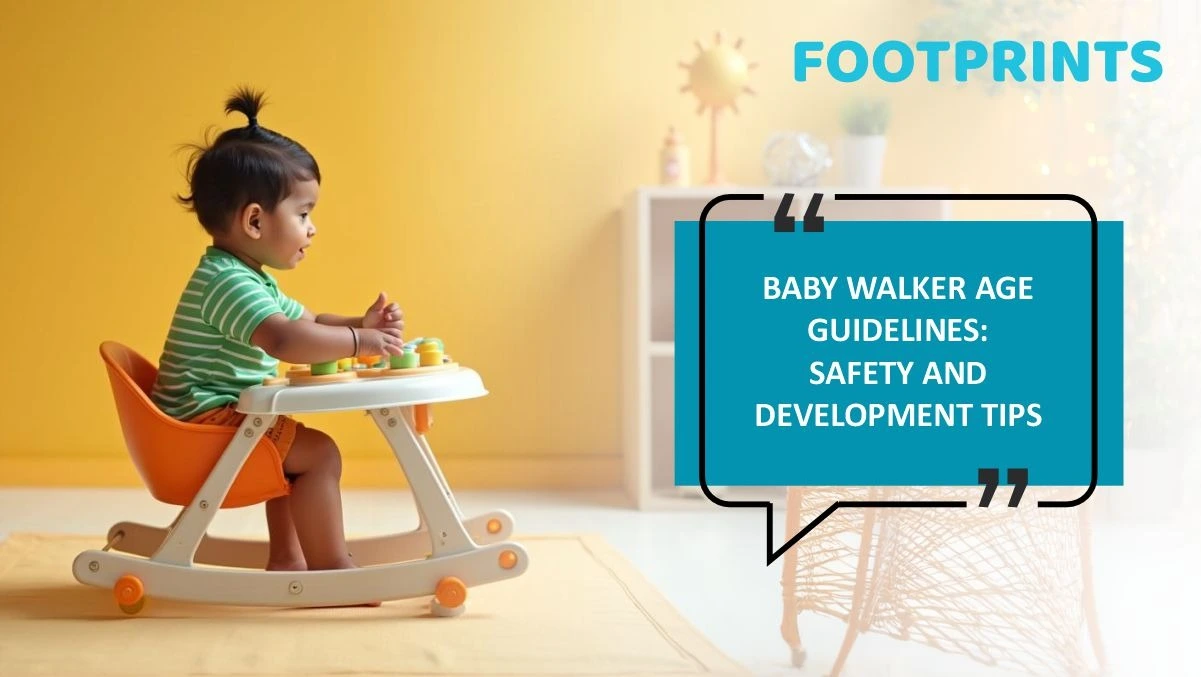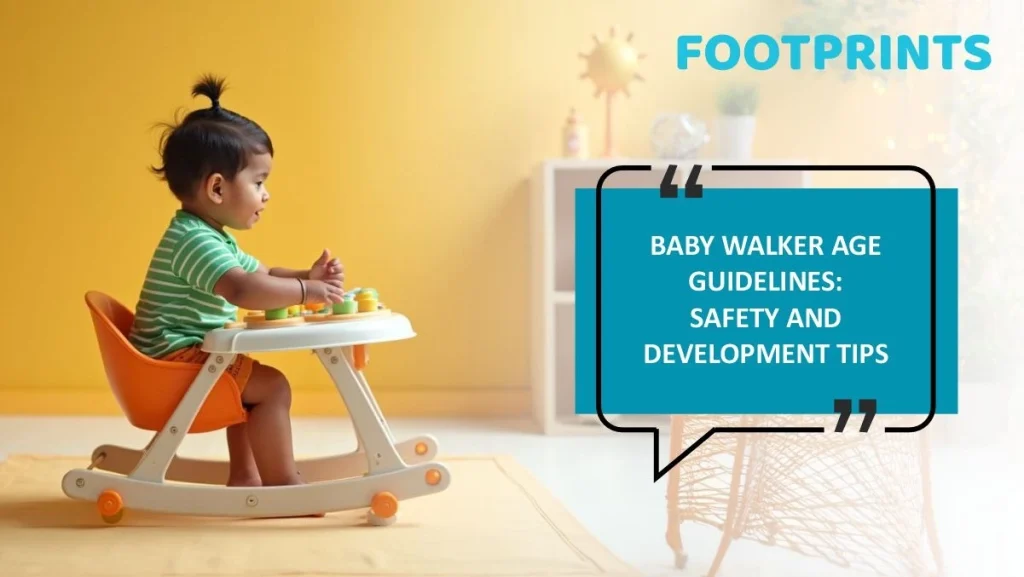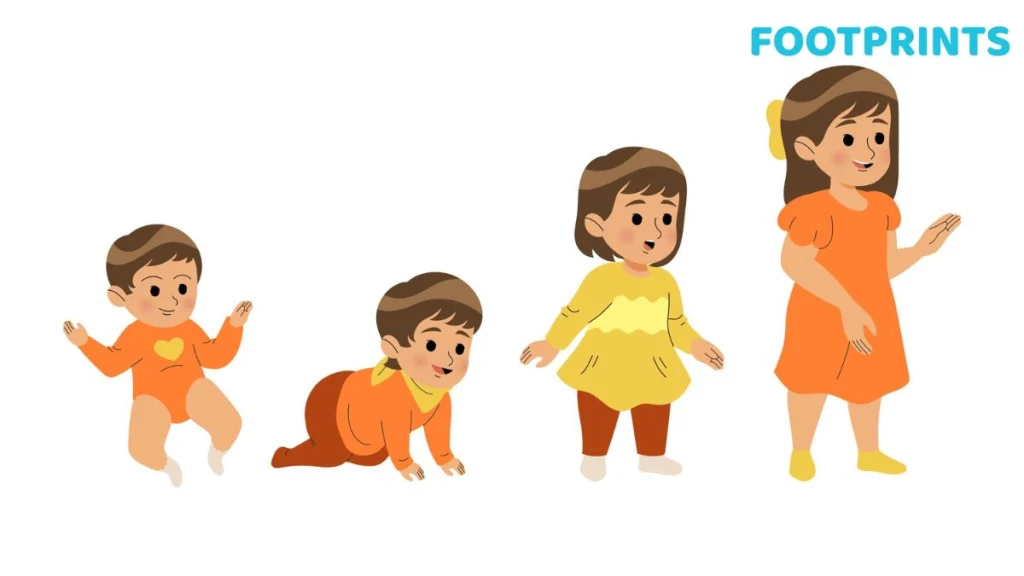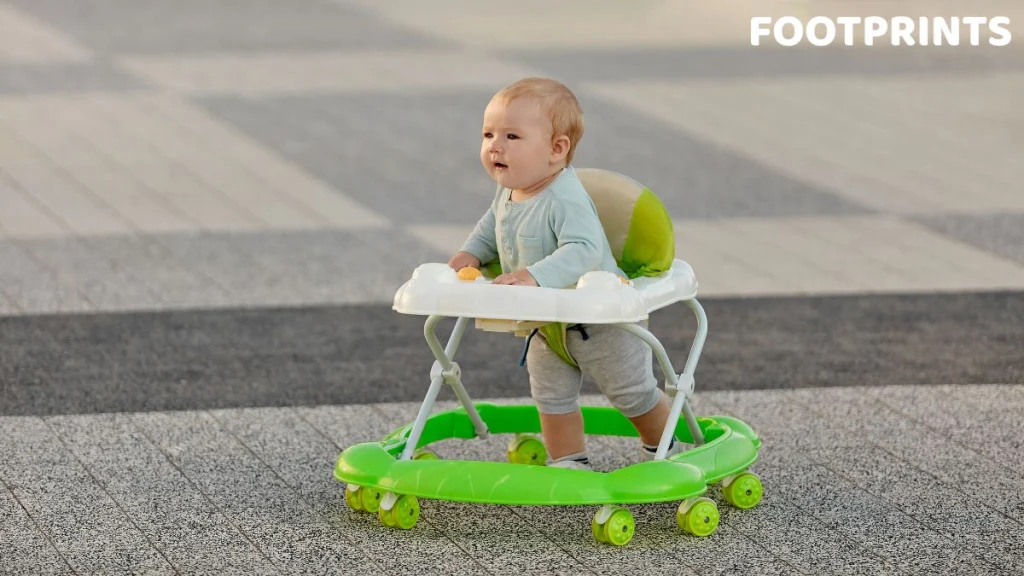

When a child takes his or her first tottering steps- that is a milestone every parent waits for! It fills one’s heart with so much pride to see the baby walking independently for the very first time. This is a moment that you simply want to capture in your mind’s eye to play and replay.
Ever so often, parents use a baby walker to hasten this milestone. The question remains, is a baby walker safe? The short answer is that it depends on when you introduce it.
When to Use Baby Walker
The usage of a baby walker comes with age restrictions. It stands to reason since the baby’s legs and feet are delicate and developing. Unless they are ready to bear the body weight, putting undue pressure on them can lead to developmental issues. Let us look at the various phases of development in a baby to figure out the right age to introduce a walker.
1. Pre Walking Phase
Typically, this is a period that begins at 6 months and lasts up to 15 months. In this period, many changes take place in the baby- in terms of physical, social, and emotional development. Let us focus on the physical development of the baby in this phase. This is when the baby develops a lot of motor skills. This brings with it mobility as the baby can roll over, sit, begin to crawl and more. Hand-leg coordination and hand-eye coordination are improved. The baby’s leg muscles are developing at the same time, and the baby is not fully ready to take on body weight. This clearly isn’t time, though, to hasten his or her walking, and this isn’t quite the time to introduce the walker.

2. Early Walking Stage
The period between 15-24 months sees your baby being mobile. The bay stands up with support and tries to take those tottering steps. The leg muscles are now far more developed. Should you want to offer walking support, this is the right age for a baby walker and the best time to invest in a sturdy walker.
Some of the developmental signs to look for can reassure you that the walker can now be used include:
- The child can pull up and stand
- Having stood up, he can stand without any assistance for some time
- The child is taking walks if you offer stable support
3. Independent Walking Stage
This is a period beyond 24 months. At this time, typically, the child has picked up the skill to walk. This is the time to transition from the walker to walking independently.
Why is it important to follow age restrictions?
If you are still wondering why the above-age guidelines need to be followed, it is because the child needs to be at the right developmental stage to use a walker. For one, if you offer a walker before the child’s neck is stable, the muscles could be harmed. Apart from that, the early introduction of the walker can also affect the leg muscles and bones.
How do you choose the baby’s first walker?
It is imperative that the walker that you choose supports your child and is safe. The aspects to look for in a walker, therefore include:

1. Safety
Above anything, you need to choose a safe and sturdy design with a wide base so that there is no fear of tripping. Look out for a walker with smooth wheels that offer maneuverability. Another non-negotiable aspect is that the walker should be equipped with safety locks. Ensure that you check that the walker can support the child’s weight. Child safety also demands that the frame be made of non-toxic material. Overall, it is highly recommended that you look for a walker that comes with a safety certification, so you are assured of best-in-class safety norms.
2. Comfort
A padded seat is a must for a child’s comfort. Comfort also demands that the walker’s height be adjustable to accommodate the growing child.
3. Practical Concerns
Ensure that you also make sure of practical concerns, such as ensuring that the walker is foldable so that you can carry it easily. You also need to ensure that it has removable seat covers and easy-to-clean surfaces to ensure hygiene.
4. Engagement
Several walkers come with music and toys to keep the baby engaged.
To Sum Up
Prior to using a walker ensure that the baby is developmentally prepared for its use. A clear understanding of the ideal age to use the walker and the developmental milestones to look for. Should you be sure that the child will benefit from using a walker, ensure that you choose the right walker that conforms to safety standards. Investing in a good quality product will be key in offering the child the necessary support and ensuring that you have complete peace of mind.
That said, if you still aren’t comfortable with the idea of using a walker, that is fine too as you could let the baby take their own independent steps. To help them in the process, you could, however, help build muscle strength. This can be done in a wide variety of ways- using push toys, baby push walkers, baby standing walkers, gyms, and more.
Stay tuned to this space for more informative content. At Footprints Childcare, a large chain of preschools and playgroups across the country that has emerged as a preferred parenting partner, we are fully committed to the child’s holistic development.
Here’s to enjoying the child’s milestones!

Amita is an experienced educator with over 30 years of experience. She has an outstanding understanding of child development, having worked with various age groups for prestigious businesses. She has been dedicated to handling Footprints’s Curriculum and Delivery department for the past decade. Amita’s credentials include being one of India’s few HighScope Curriculum certified trainers and volunteering as a course leader for Landmark Education, the world’s largest training firm.

